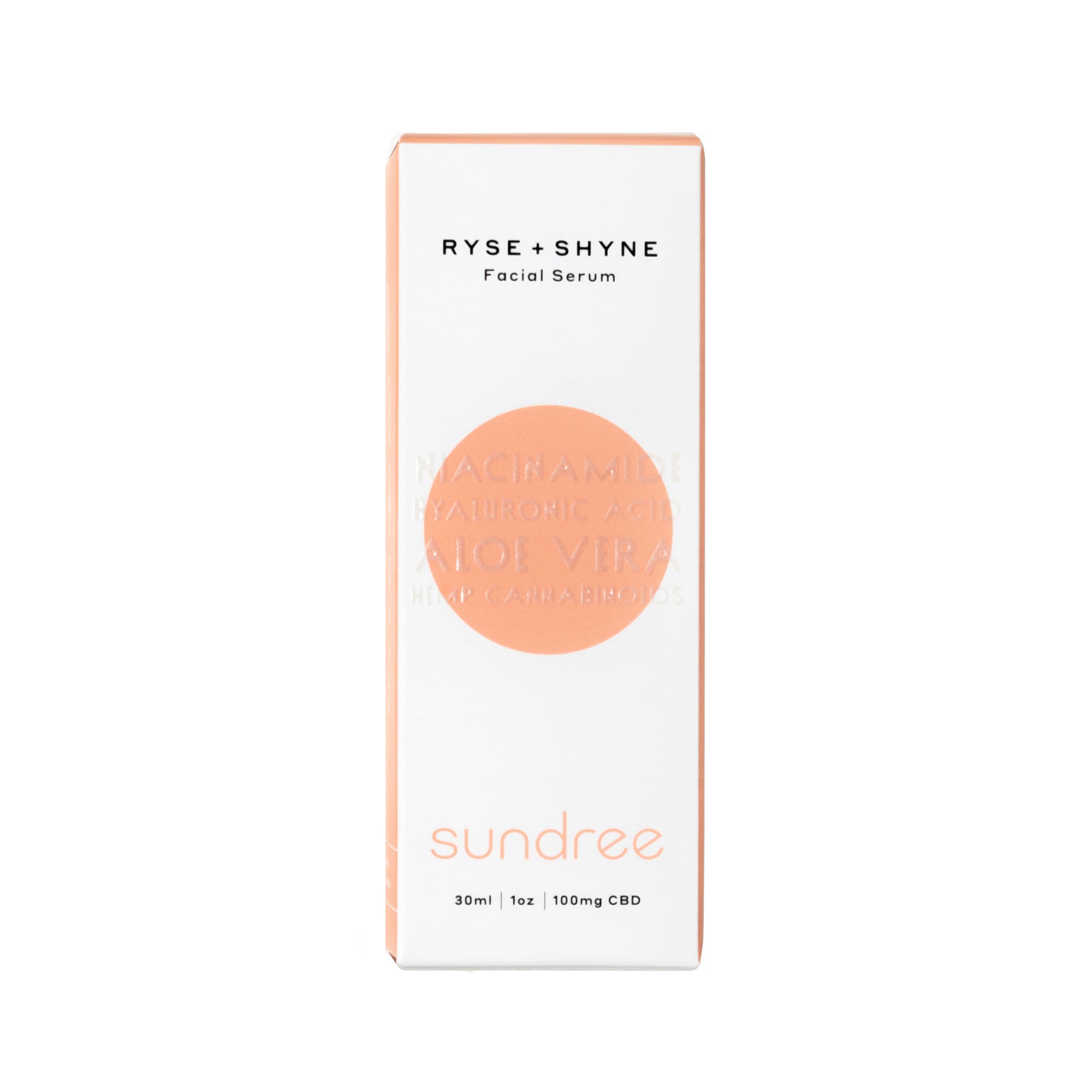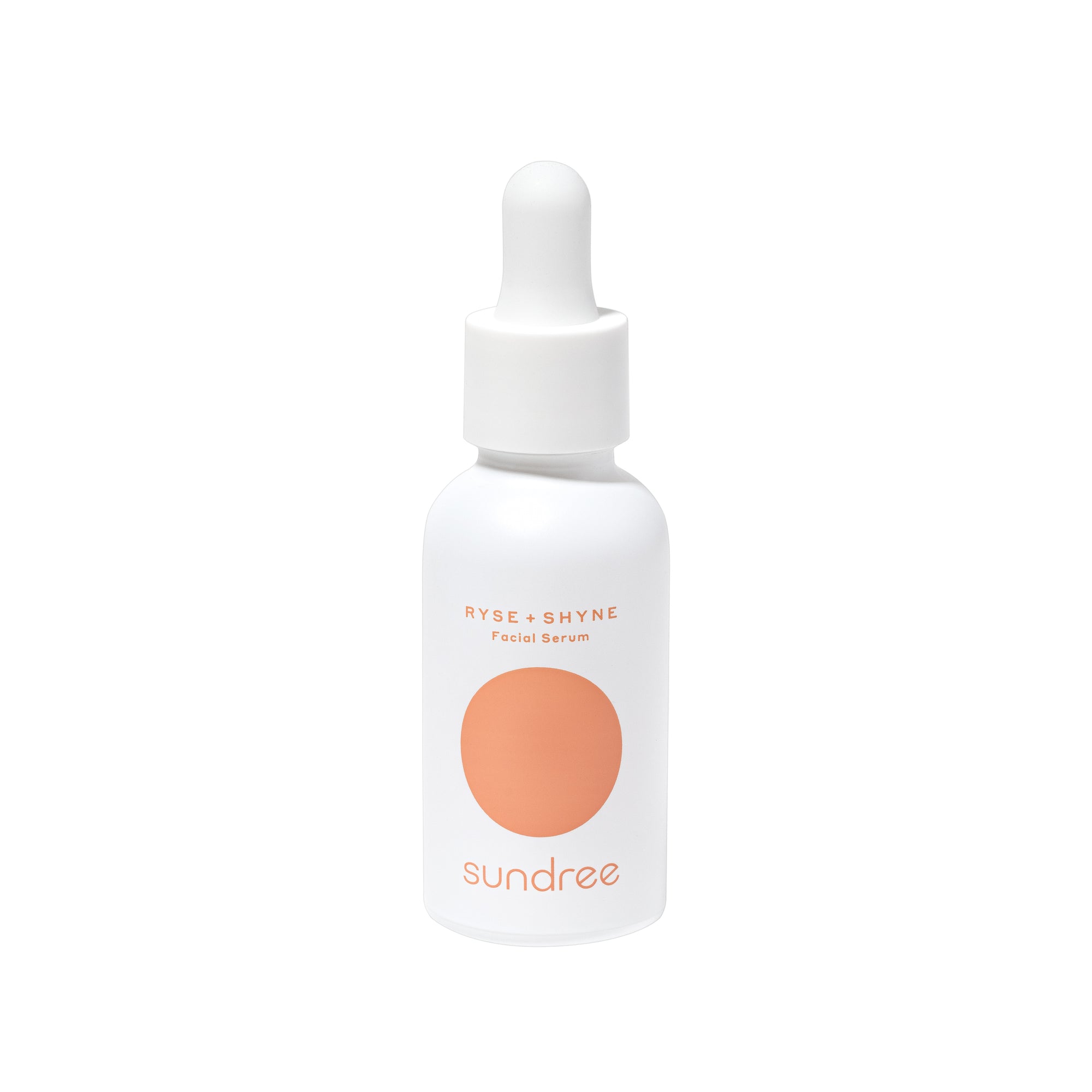Dark circles and puffiness around the eyes are common skincare concerns that can affect anyone, regardless of age or skin type. It’s important to understand the causes behind these issues to find effective solutions. Many ingredients and treatments can help with dark circles and puffiness.¹ Also, don’t forget to get proper sleep and manage stress levels, in addition to protecting your skin from sun damage. Let’s take a deeper dive into how to treat dark circles and puffiness.
Causes of Dark Circles and Puffiness
Dark circles can be caused by a many factors, including genetics, age, fatigue, allergies, and lifestyle habits. Genetics can predispose individuals to thinner under-eye skin or hyperpigmentation, while factors like lack of sleep, stress, and dehydration can exacerbate their appearance.
Puffiness around the eyes often results from fluid retention, which can be caused by allergies, sinus congestion, salty foods, alcohol consumption, or sleeping in certain positions. Additionally, as we age, the skin around the eyes may lose elasticity, leading to sagging and puffiness.
Dark circles and puffiness not only detract from the overall appearance of the eyes but can also make individuals appear tired or older than they actually are. Addressing these concerns not only enhances one's appearance but also contributes to overall skin health and confidence.
Anatomy of the Eye Area: Why It's Prone to Dark Circles and Puffiness
The delicate skin around the eyes is particularly sensitive to dark circles and puffiness due to its unique structure and function.
Delving into the Delicate Skin Structure: The skin around the eyes is thinner and more fragile than the skin on the rest of the face, making it more prone to damage and signs of aging. This thinness also means that blood vessels and pigmentation are more visible, contributing to the appearance of dark circles.
Highlighting the Role of Blood Vessels and Capillaries: The area around the eyes contains a dense network of capillaries and blood vessels, which can become more prominent due to factors like inflammation, fatigue, or allergies. When these blood vessels dilate or leak, they can contribute to the appearance of dark circles.
Impact of Aging on Under Eye Skin: As we age, the skin around the eyes undergoes changes such as decreased collagen and elastin production, leading to thinning and sagging. This loss of elasticity can exacerbate the appearance of dark circles and puffiness, making it crucial to incorporate targeted skincare treatments.
Common Ingredients in Eye Creams and Their Benefits
Numerous ingredients found in eye creams are specifically formulated to address dark circles and puffiness, offering many benefits for the delicate eye area.
Hyaluronic Acid: a humectant that draws moisture into the skin, helping hydrate and plump the delicate under-eye area. By improving skin hydration, hyaluronic acid can minimize the appearance of fine lines and wrinkles while promoting a smoother, more youthful-looking complexion.
Vitamin C: a powerful antioxidant that helps brighten skin and reduce the appearance of dark circles. Additionally, vitamin C helps to protect the skin from environmental stressors and free radical damage such as UV radiation and pollution, promoting overall skin health.
Caffeine: a popular ingredient in eye creams due to its ability to constrict blood vessels and reduce inflammation, thereby minimizing the appearance of puffiness. Additionally, caffeine can help improve circulation, which can further help reduce the appearance of dark circles and promote a more refreshed appearance.
Retinol: a form of vitamin A, is a potent anti-aging ingredient that helps by stimulating collagen production and increase cell turnover, leading to smoother, firmer skin. By promoting collagen synthesis, retinol can help to improve the appearance of fine lines, wrinkles, and sagging skin around the eyes.
Peptides: small protein fragments that help to stimulate collagen production and improve skin elasticity. By promoting collagen synthesis, peptides can help to firm and tighten the delicate skin around the eyes, reducing the appearance of dark circles and puffiness.
Choosing the Right Eye Cream: Factors to Consider
With a plethora of eye creams available on the market, selecting the right one can be overwhelming. However, several factors can help guide you during your decision-making process.
Skin Type and Sensitivity: When choosing an eye cream, consider your skin type and any specific concerns or sensitivities you may have. Individuals with dry skin can benefit from richer, more emollient formulas, while those with oily or acne-prone skin might prefer lightweight, non-comedogenic options.
Specific Concerns: Different eye creams are formulated to target specific concerns, such as dark circles, puffiness, fine lines, or wrinkles. Therefore, it's important to choose an eye cream that addresses your primary skincare goals. Look for products that contain ingredients specifically designed to combat dark circles and puffiness, such as vitamin C, caffeine, or peptides.
Texture and Absorption Rate: The texture and absorption rate of an eye cream can significantly impact its efficacy and suitability for your skincare routine. Some individuals may prefer lightweight, fast-absorbing formulas that can be worn comfortably under makeup, while others may prefer richer, more nourishing textures for nighttime use.
SPF Protection for Daytime Use: Because the skin around the eyes is susceptible to sun damage, it's important to choose an eye cream with SPF protection for daytime use. Look for products that offer broad-spectrum SPF coverage to shield the eye area from harmful UV rays and prevent premature aging.
Lifestyle Changes to Reduce Dark Circles and Puffiness
In addition to using targeted skincare products, making lifestyle changes can help in reducing the appearance of dark circles and puffiness around the eyes.
Importance of Adequate Sleep and Rest: Getting an adequate amount of sleep is important for maintaining overall health and well-being, including skin health. Aim for seven to eight hours of sleep nightly to reduce the appearance of dark circles and puffiness caused by fatigue.
Managing Stress Levels and Practicing Relaxation Techniques: Chronic stress can take quite a toll on your health, including the appearance of your skin. Practice stress-reducing techniques such as yoga, mindfulness, meditation, or deep breathing to help manage stress levels and promote relaxation.
Hydration and Balanced Diet for Skin Health: Proper hydration and nutrition are imporatant for maintaining healthy, radiant skin. Drink plenty of water throughout the day to stay hydrated and try to consume a diet rich in lean proteins, vegetables, fruits, and healthy fats to provide your skin with essential nutrients and antioxidants.
Avoiding Excessive Sun Exposure and UV Damage: Excessive sun exposure can accelerate skin aging and can contribute to the appearance of dark circles, puffiness, and other signs of damage. Wear sunscreen daily, seek shade when outdoors, and wear protective clothing and accessories to help shield your skin from harmful UV rays.
Application Techniques for Maximum Effectiveness
The way you apply your eye cream can significantly impact its effectiveness and absorption into the skin. Follow these tips for maximum efficacy.
Gentle Patting Motion to Avoid Tugging on the Skin: When applying eye cream, use a gentle patting motion with the ring finger to avoid pulling or tugging on the delicate skin around the eyes. Patting gently helps to promote absorption without stretching or damaging the skin.
The ring finger is the weakest finger and exerts the least pressure, making it ideal for delicate skincare applications such as applying eye cream. Use your ring finger to dab a small amount of eye cream onto the orbital bone and gently pat it into the skin until fully absorbed.
Incorporating Eye Massage for Lymphatic Drainage: Gently massaging the skin around the eyes can help to stimulate lymphatic drainage and reduce puffiness. Use your fingertips to massage the area in gentle, circular motions, starting from the inner corners of the eyes and working outward towards the temples.
Applying Eye Cream Before Makeup for Smooth Application: For optimal results, apply your eye cream before applying makeup to ensure smooth application and long-lasting hydration. Allow the eye cream to absorb fully into the skin before you apply any makeup products to prevent pilling or creasing.
Additional Treatments and Procedures for Severe Dark Circles and Puffiness
In some cases, severe dark circles and puffiness may require additional procedures or treatments to achieve desired results.
Under Eye Fillers for Volume Restoration: Injectable fillers containing hyaluronic acid or collagen can be used to restore volume to hollow areas under the eyes, reducing the appearance of dark circles and sunken tear troughs.
Chemical Peels and Laser Treatments for Pigmentation: Chemical peels and laser treatments can help to improve the appearance of dark circles caused by hyperpigmentation or uneven skin tone. These treatments work by removing the outer layer of damaged skin cells and stimulating collagen production, resulting in smoother, more even-toned skin.
Micro-needling and Radiofrequency for Collagen Stimulation: Micro-needling and radiofrequency treatments can help to stimulate the production of collagen improve skin texture and elasticity.² These minimally invasive procedures involve the use of tiny needles or heat energy to create controlled micro-injuries in the skin, triggering the body's natural healing response and collagen production.
Home Remedies and DIY Treatments for Mild Concerns: For individuals with mild dark circles and puffiness, there are several home remedies and DIY treatments that may help improve the appearance of the under-eye area. These include applying cold compresses, cucumber slices, or tea bags to reduce puffiness, as well as using natural ingredients such as aloe vera, rose water, or almond oil to hydrate and soothe the skin.
Final Thoughts
Dark circles and puffiness around the eyes can be challenging to treat, but with the right skincare products and lifestyle changes, it's possible to achieve brighter, firmer-looking eyes. By understanding the causes behind these concerns and choosing targeted treatments that address them, you can improve the overall health and appearance of the delicate skin around the eyes. Whether you opt for eye creams containing hydrating hyaluronic acid, brightening vitamin C, or firming peptides, consistency and patience are key to seeing results. Remember to also incorporate lifestyle changes such as getting adequate sleep, managing stress levels, and protecting your skin from sun damage to further enhance the effectiveness of your skincare routine. With dedication and diligence, you can achieve the radiant, youthful-looking eyes you desire.
Citations:
- S, Brooklyn. (2022). ‘How to Get Rid of Dark Circles’, Sundree, Accessed April 21, 2024. Available at: https://sundree.com/blogs/news/how-to-get-rid-of-dark-circles
- Cherney, Kristeen. (2023). ‘Microneedling: Collagen Induction Therapy’, Healthline, Accessed April 22, 2024. Available at: https://www.healthline.com/health/microneedling#:~:text=Microneedling%20is%20a%20cosmetic%20procedure,scars%2C%20acne%2C%20and%20wrinkles.













